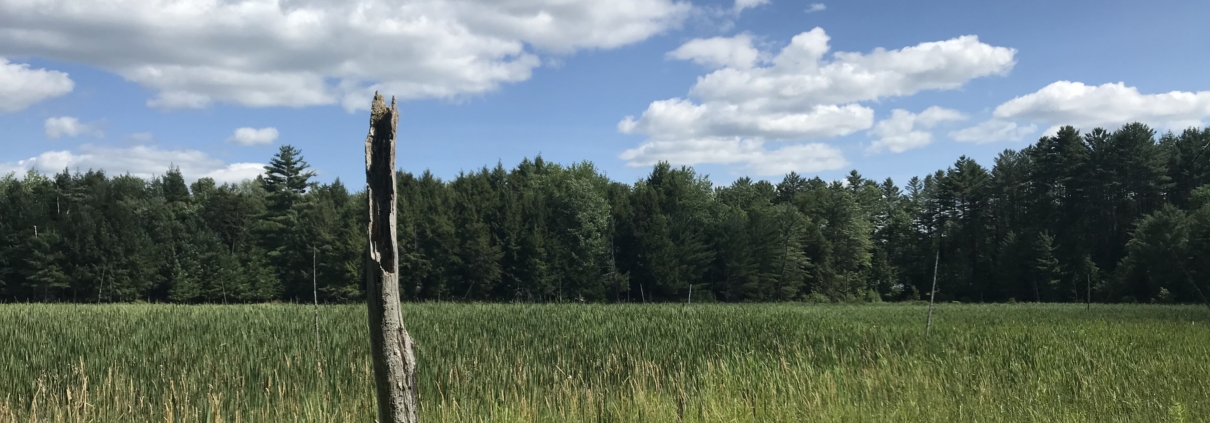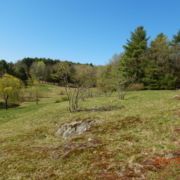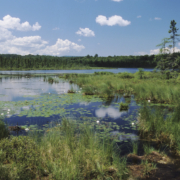American Wetlands Month: Spotlighting Upper Valley Marshes
May is American Wetlands Month. Here at the UVLT, we’re always happy to call attention to one of our most important — but underappreciated — ecosystems. Each week this month, we’ll highlight one of the four types of wetlands (marshes, swamps, bogs, and fens), with examples from our community.
So, what are wetlands, and why do we need to conserve them?
Why Wetlands Matter
Wetlands are areas where water covers the soil or is present at or near the soil’s surface for at least parts of the year. More simply put, they are areas where water and earth meet.
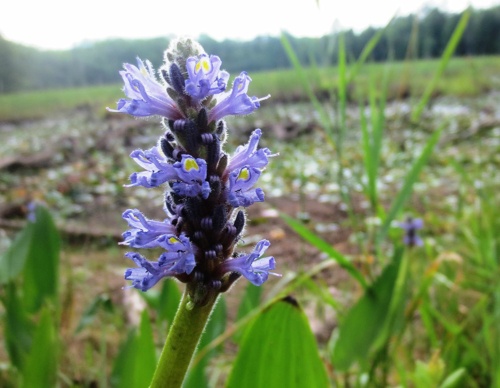 While wetlands are often overlooked or even filled in, they play a vital ecological role. They are natural “kidneys” that help filter pollution and sediment from our water and also help absorb floodwaters. Here in the Upper Valley, wetlands have played a critical protective role during the catastrophic storms of recent years. The flooding we have experienced would have been much worse without wetlands to slow the rush of water from overflowing rivers and protect homes, businesses, and infrastructure.
While wetlands are often overlooked or even filled in, they play a vital ecological role. They are natural “kidneys” that help filter pollution and sediment from our water and also help absorb floodwaters. Here in the Upper Valley, wetlands have played a critical protective role during the catastrophic storms of recent years. The flooding we have experienced would have been much worse without wetlands to slow the rush of water from overflowing rivers and protect homes, businesses, and infrastructure.
Wetlands are also one of our most vital and diverse ecosystems. They are home to a wide range of species, including plants and algae specially adapted to grow in very wet conditions. They are also a habitat for fish, insects, amphibious species, birds, and even mammals. In turn, they provide an important food source for larger land animals.
But our wetlands are in trouble. Regular surveys from the U.S. Fish and Wildlife Service are documenting rapid wetland loss nationwide, and freshwater wetlands like those in the Upper Valley are especially at risk. That’s why we’re working hard to conserve these vital natural resources.
Spotlight on Marshes
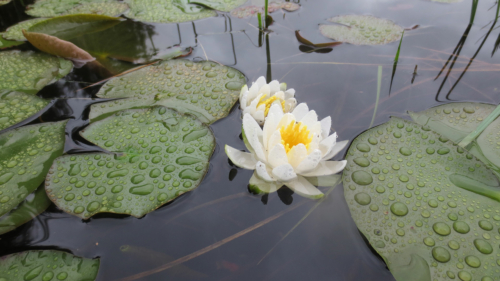
Marshes are one of the best-known types of wetlands and are found in landscapes ranging from Western prairies to Florida’s
Everglades. They are usually or always inundated with water and have extensive vegetation adapted to their nutrient-rich, waterlogged soil. Marshes can be either tidal or non-tidal, with fresh, brackish, or salt water. Due to our distance from the ocean, the Upper Valley is home to non-tidal freshwater marshes.
Water levels in non-tidal freshwater marshes can vary from inches to feet depending on precipitation. They play a moderating function, absorbing excess water and helping recharge the groundwater during periods of drought. Since water moves slowly through these marshes, they give pollutants and heavy sediment to sink to the bottom before the water arrives in the streams, ponds, and lakes where we enjoy recreating.
Ready to see a marsh with new eyes? UVLT’s Zebedee Wetland is an excellent example. This 27-acre property in Thetford offers excellent wildlife-watching opportunities — take a stroll around the Linny Levin Trail to spot frogs, birds, and beavers hard at work. On a recent trip to to Zebedee, UVLT staff heard, but could not see (bitterns are masters of camouflage!) our returning American Bittern.
Stay tuned to learn more about the types of wetlands here in the Upper Valley!

